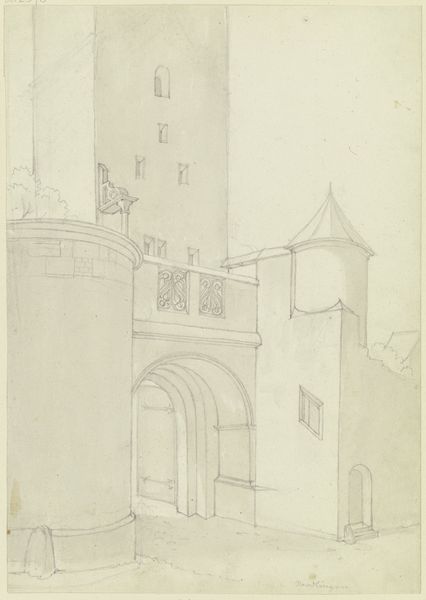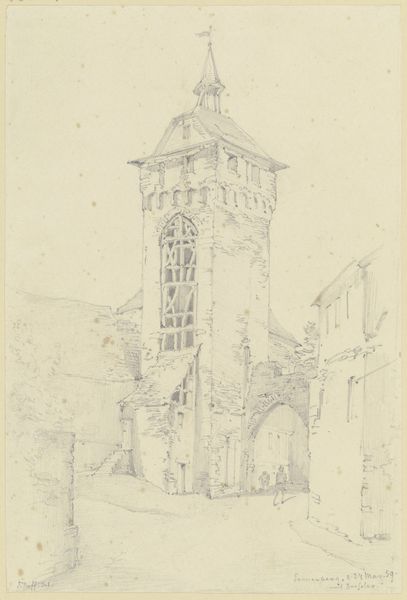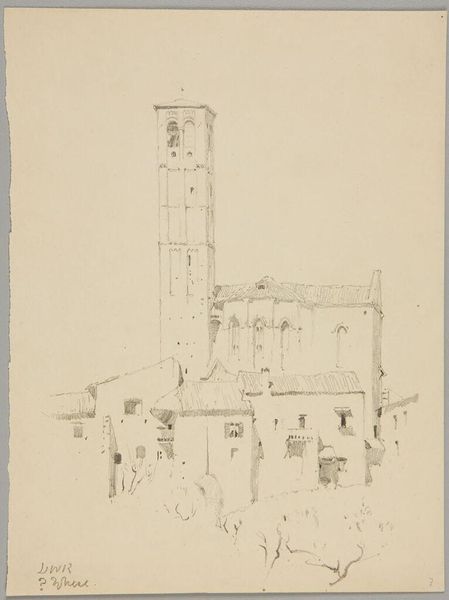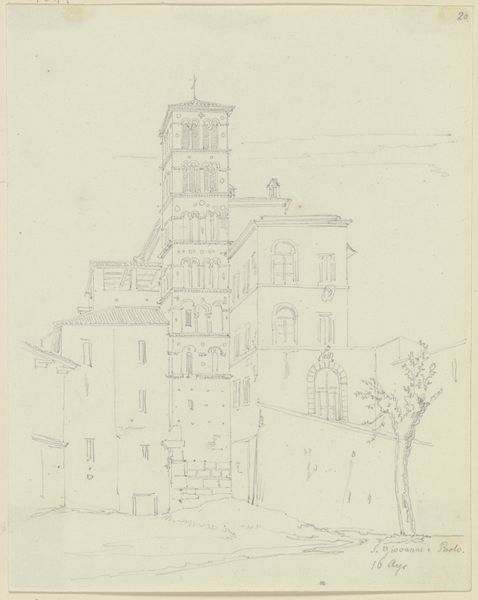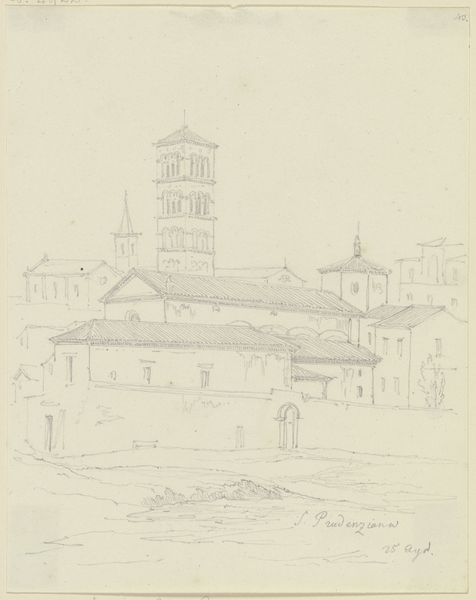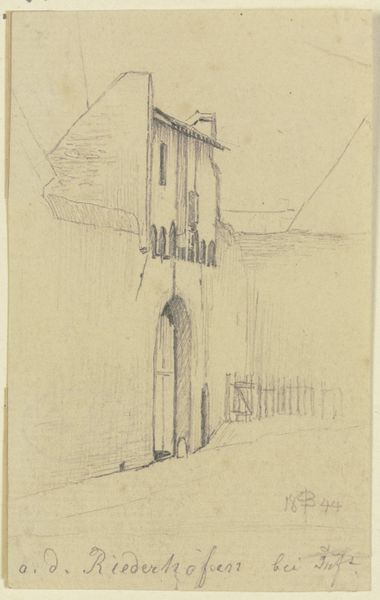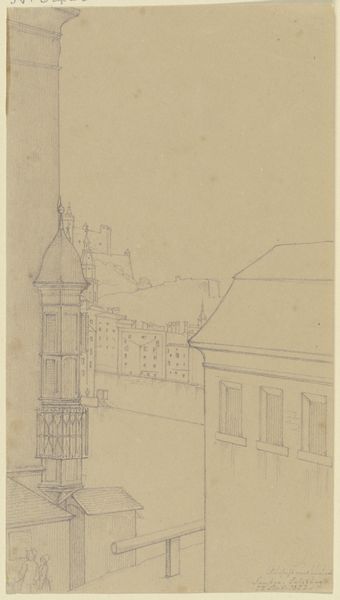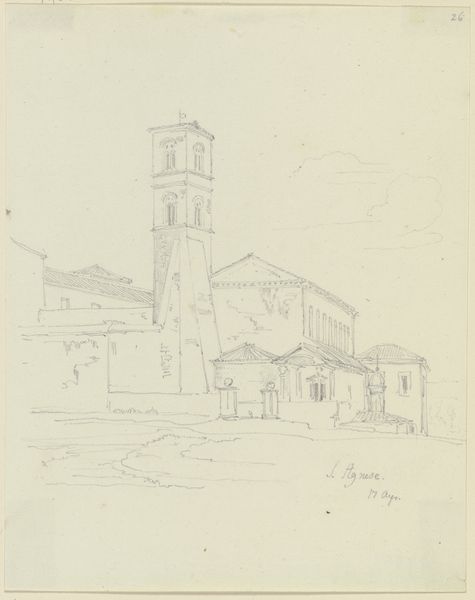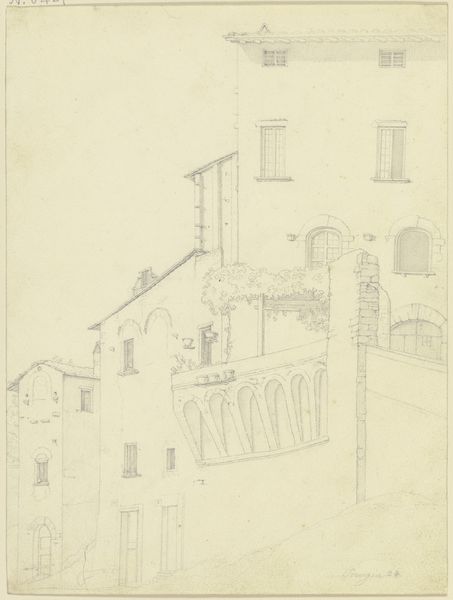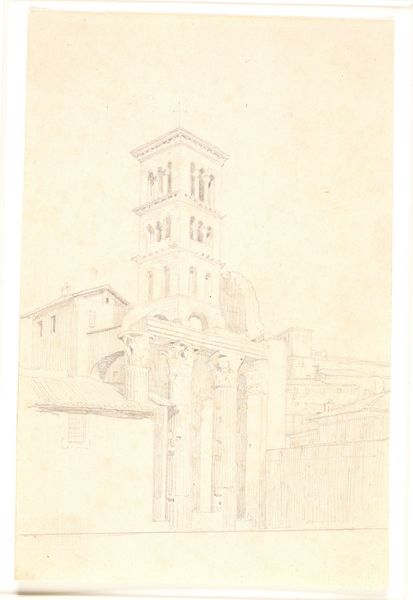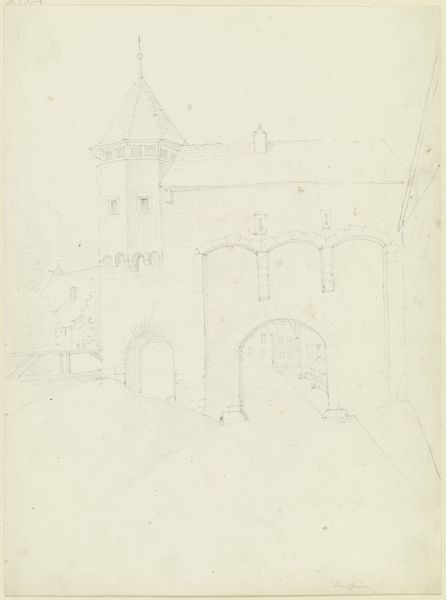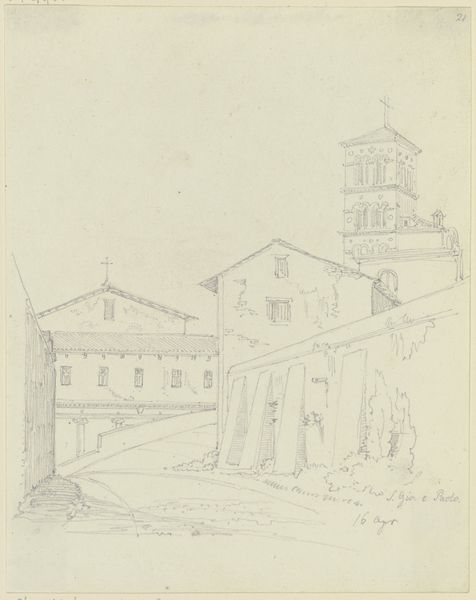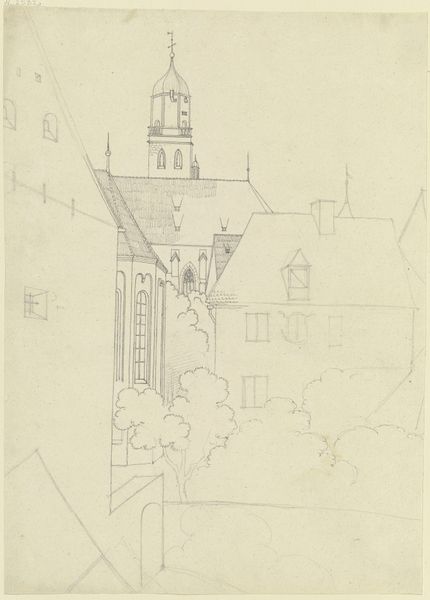
drawing, paper, pencil, architecture
#
drawing
#
16_19th-century
#
landscape
#
paper
#
german
#
pencil
#
architecture
Copyright: Public Domain
Curator: This is Karl Ballenberger's "Löpfinger Tor zu Nördlingen," a pencil drawing on paper dating from the 19th century. Editor: It's wonderfully precise. There's something serene and ordered about the linear quality that draws the eye up, yet it simultaneously feels haunted. Curator: Indeed, Ballenberger's landscapes often evoke a melancholic air, even when depicting something as seemingly robust as a city gate. This gate, acting as a portal to Nördlingen, stands as a threshold—both physically and symbolically. Do you notice the dominance of vertical lines, representing power and authority. Editor: I am struck by its monumental character; the gate almost seems to be holding back the viewer, the architectural equivalent of a "no trespassing" sign for some visitors. I see walls used to separate the outside from inside, perhaps a critique about marginalization and exclusion from the medieval structure? Curator: You're speaking of visual separation that definitely serves a deeper meaning. These gates in history often symbolized protection but equally created divisions and imposed a very concrete social order. Consider also the round tower. The circle in architectural symbolism carries layers of association: completion, eternity, celestial orbits... What we now experience as a picturesque medieval scene carries echoes of power dynamics embedded in its very structure. Editor: And the pencil rendering only reinforces that sense. It’s almost like an architectural blueprint or historical record devoid of humanity and ripe for scrutiny. What narrative lies in the silent stones? The artist subtly reminds us that these fortifications are products of social control, and continue to stand. What do they signify for those excluded? Curator: Precisely. It serves as a record and simultaneously prompts critical questioning of its symbolism, its place within society, and the ideologies embedded within it. The light in the entryway offers passage to more for some but not all. It is indeed about reflecting on these silent witnesses of power and to reflect upon our understanding of the society of our time. Editor: Thank you for bringing those details to light, this is definitely one of those artworks that quietly unsettles and asks big questions.
Comments
No comments
Be the first to comment and join the conversation on the ultimate creative platform.
